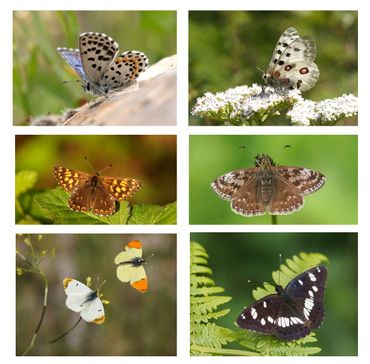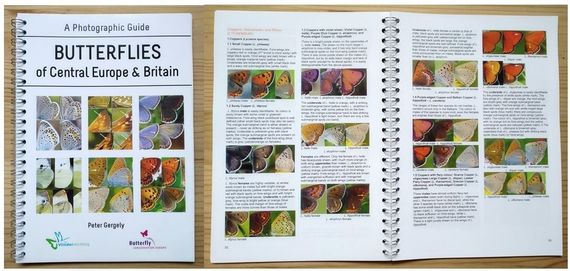65. Free .pdf Photographic Guide Butterflies of Central Europe and Brittain
The butterfly monitoring is an important and necessary activity to determine the status of butterfly populations and their distribution. Every person can help in collecting butterfly data with different platforms and methodologies. Making the data available is a decisive action for the improvement of conservation and research. Here we describe some useful and easy platforms where you can be part of one citizen science community and share your observations for the improvement of the conservation of butterflies and biodiversity in general. o ButterflyCount App (eBMS) for Apple and Android devices - www.butterfly-monitoring.net/ebms-app o iNaturalis www.inaturalist.org o Observation www.observation.orgDownload hem gratis van https://lnkd.in/dpD2eW4 65. Photographic Guide Butterflies of Central Europe and Brittain https://assets.vlinderstichting.nl/docs/0b095bc2-0387-4785-9f7e-5f7a987b3468.pdf Blauwtjes herkennen
Butterflies are one of the most conspicuous insect groups, with wonderful colour and shapes. However, sometimes their identification is not easy and we need precise keys to identify butterflies.
First, it is important to differentiate butterflies (Rhopalocera) from moths (Heterocera) and then determine the proper family an individual belongs.

In Europe, we have 6 different families:
- Hesperiidae - Skippers
- Papilionidae - Apollos, Festoons and Swallowtails
- Pieridae - Whites and Yellows
- Riodinidae - Metalmarks
- Lycaenidae - Blues, Copper and Hairstreaks
- Nymphalidae - Fritillaries, Admirals, Emperors, Gliders, Browns and Heaths
Identification with Field Guides
There are many materials and resources to help in butterfly identification like websites, books and field guides. This last one can be a good support in the field providing the essential characteristics to find the correct butterfly species.
In the ABLE project, we produced several Field Guides per region reducing the number of species and doing easily the identification of butterflies in a concrete area. You can download the pdf and print directly the Field Guide.
- Field Guides of Italy: Padana Plain region, Mediterranean, Apennines, Mediterranean Islands
- Field Guides of Spain: Andalusia
A Photographic Guide - Butterflies of Central Europe & Britain

This Field Guide contains information to identify 269 butterfly species occurring in Britain, Western and Central Europe. With detailed pictures of identification characteristics and precise pointing marks, this Guide will help you to identify difficult and similar species.
Author Peter Gergely. A hardcopy can be bought at the Dutch Butterfly Conservation.
There are many websites on the internet that could help a lot in butterfly identification in different languages. Here we give a list of the best website to help you identifying butterflies and moths:
- www.leps.it Moths and Butterflies of Europe and North Africa
- Lepiforum Bestimmungshilfe für die in Europa nachgewiesenen Schmetterlingsarten
- www.learnaboutbutterflies.com Butterflies of the world
- www.eurobutterflies.com by Matt Rowlings
- UFZ Distribution maps of European butterfly species
- Butterflies of Bulgaria



Comments
Add a Comment